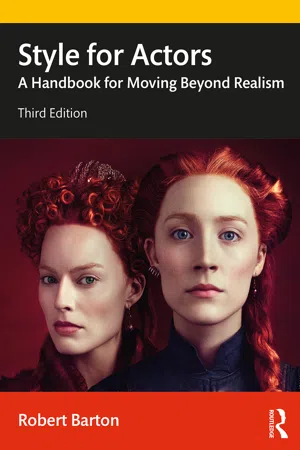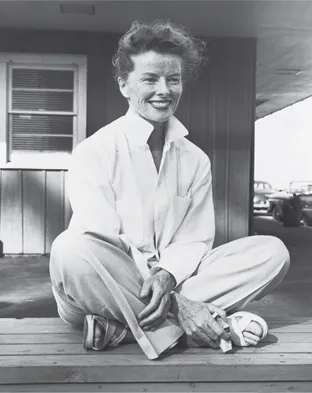
- 416 pages
- English
- ePUB (mobile friendly)
- Available on iOS & Android
About this book
Style for Actors is an award-winning handbook and the definitive guide to roles in historical drama. Anyone who has ever struggled with capes, fans, swords, doublets and crinolines should make this third edition their constant companion.
The past is a foreign country, and this outstanding book is concerned with exploring it from the actor's point of view. Specific guides to each major period give readers a clear map to discover a range from Greek, Elizabethan, Restoration and Georgian theatre to more contemporary stylings, including Futurism, Surrealism and Postmodernism. New material in this edition covers Commedia dell'arte and non-Western forms of theatre, theatrical fusion and developments in musicals and Shakespeare. The book's references, images, resource lists and examples have all been updated to support today's diverse performers.
Robert Barton takes great care to present the actor with the roles and genres that will most commonly confront them. Containing a huge resource of nearly 150 exercises, suggestions for scene study and applications not only for theatrical performance but also for stylistic challenges in the reader's own offstage life, this book is an invaluable resource for students and practitioners of acting and drama.
Frequently asked questions
- Essential is ideal for learners and professionals who enjoy exploring a wide range of subjects. Access the Essential Library with 800,000+ trusted titles and best-sellers across business, personal growth, and the humanities. Includes unlimited reading time and Standard Read Aloud voice.
- Complete: Perfect for advanced learners and researchers needing full, unrestricted access. Unlock 1.4M+ books across hundreds of subjects, including academic and specialized titles. The Complete Plan also includes advanced features like Premium Read Aloud and Research Assistant.
Please note we cannot support devices running on iOS 13 and Android 7 or earlier. Learn more about using the app.
Information
Part I
Finding style
- 1Recognizing style: The eyes of the beholder
- 2Analyzing style: Survival questions
- 3Mastering style: The classical actor


1 Recognizing style
The eyes of the beholder
Defining style
Style is a way of understanding the world and then entering it based on what you see
Style is what is shared by characters in a play (or people in a group), while characterization is what makes them distinct from each other
Table of contents
- Cover
- Half Title
- Title
- Copyright
- Dedication
- Contents
- Acknowledgments
- Preface
- Part I Finding style
- Part II Achieving style
- Part III Exploring style
- Appendices
- Appendix A: Group exercises for chapter 1
- Appendix B: Group exercises for chapter 2
- Appendix C: Group exercises for chapter 3
- Appendix D: Group exercises for chapter 4
- Appendix E: Group exercises for chapter 5
- Appendix F: Group exercises for chapter 6
- Appendix G: Group exercises for chapter 7
- Appendix H: Group exercises for chapter 8
- Appendix I: Group exercises for chapter 9
- Appendix J: Group exercises for chapter 10
- Index